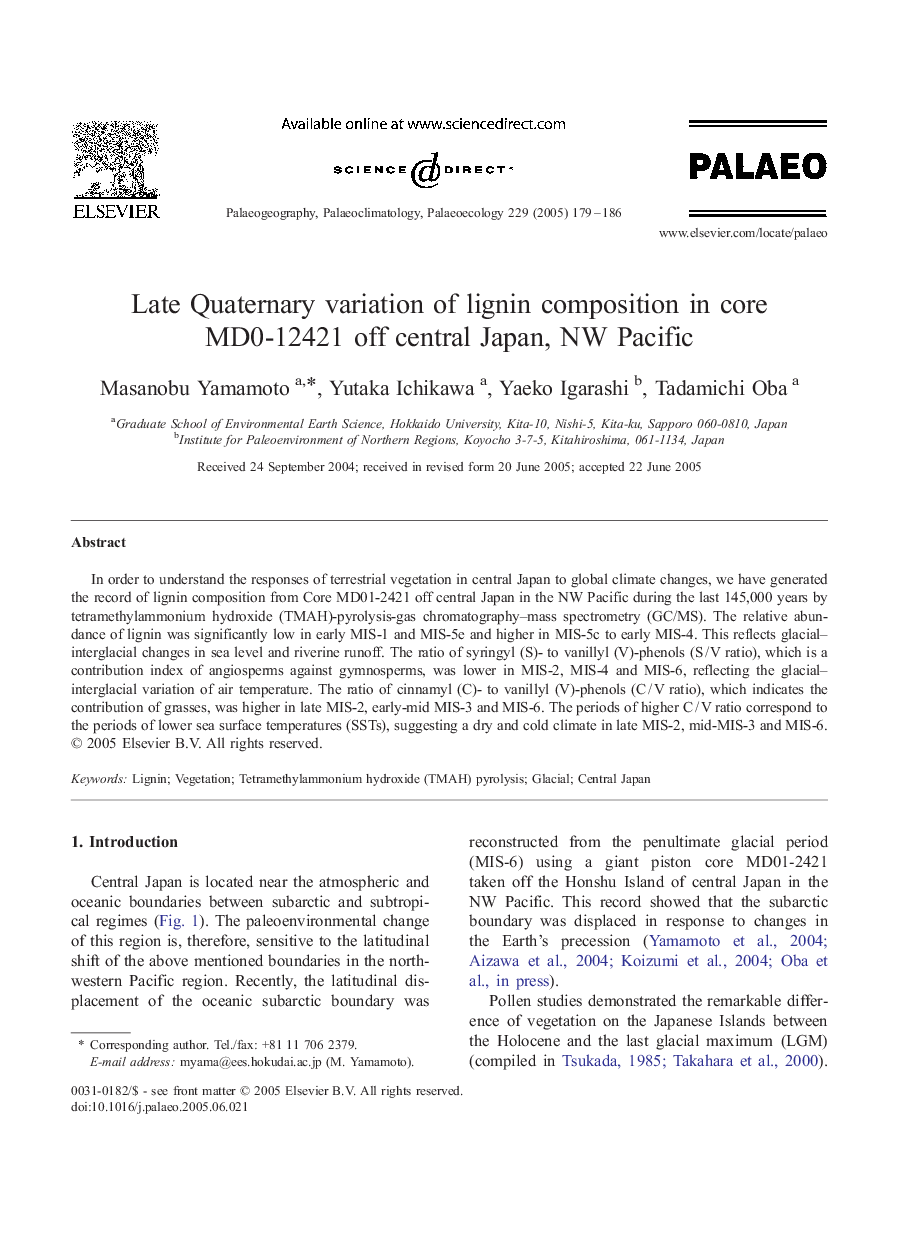| Article ID | Journal | Published Year | Pages | File Type |
|---|---|---|---|---|
| 9462897 | Palaeogeography, Palaeoclimatology, Palaeoecology | 2005 | 8 Pages |
Abstract
In order to understand the responses of terrestrial vegetation in central Japan to global climate changes, we have generated the record of lignin composition from Core MD01-2421 off central Japan in the NW Pacific during the last 145,000 years by tetramethylammonium hydroxide (TMAH)-pyrolysis-gas chromatography-mass spectrometry (GC/MS). The relative abundance of lignin was significantly low in early MIS-1 and MIS-5e and higher in MIS-5c to early MIS-4. This reflects glacial-interglacial changes in sea level and riverine runoff. The ratio of syringyl (S)- to vanillyl (V)-phenols (SÂ /Â V ratio), which is a contribution index of angiosperms against gymnosperms, was lower in MIS-2, MIS-4 and MIS-6, reflecting the glacial-interglacial variation of air temperature. The ratio of cinnamyl (C)- to vanillyl (V)-phenols (CÂ /Â V ratio), which indicates the contribution of grasses, was higher in late MIS-2, early-mid MIS-3 and MIS-6. The periods of higher CÂ /Â V ratio correspond to the periods of lower sea surface temperatures (SSTs), suggesting a dry and cold climate in late MIS-2, mid-MIS-3 and MIS-6.
Keywords
Related Topics
Physical Sciences and Engineering
Earth and Planetary Sciences
Earth-Surface Processes
Authors
Masanobu Yamamoto, Yutaka Ichikawa, Yaeko Igarashi, Tadamichi Oba,
